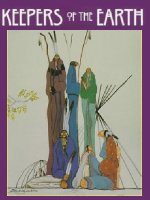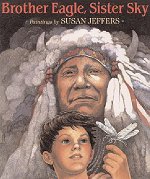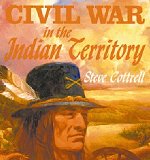|
|
|
|
|
 Keepers of the Earth: Native American Stories and Environmental Activities for Children These are stories from the various First Nations. They are well told. Get this for your kids. In an age of instant media, the storyteller's art is one that is timeless, connecting us to our oral past. Make sure that it connects to our future, too. |
 Thirteen Moons on Turtle's Back The Turtle's shell stand for the 13 cycles of the moon, each with its own name and a story that relates to the changing seasons. Joseph Bruchac and Jonathan London collaborate to reveal the beauty of the natural world around us, while Thomas Locker's illustrations honor both Native American legends and the varied American landscape |
 Brother Eagle Sister Sky The Earth does not belong to us. We belong to the Earth. The great American Indian Chief Seattle spoke these words over a hundred years ago. His remarkably relevant message of respect for the Earth and every creature on it has endured the test of time and is imbued with passion born of love of the land and the environment |
 The Talking Earth Billie Wind lives with her Seminole tribe. She follows their customs, but the dangers of pollution and nuclear war she's learned about in school seem much more real to her. How can she believe the Seminole legends about talking animals and earth spirits? |
 The Indians and the Civil War - Effects of the American Civil War on the Native American History Native American history has always been a study full of ambiguous points. Nowadays, when the outlived tribes still live on poor circumstances and try to keep step with our running world despairingly, their unique culture deserves more attention than used to. |
Kindle Available Civil War in the Indian Territory When the war broke out, both sides wanted the Five Civilized Tribes, led by the Cherokees, and each got around half. The Confederacy sent Brigadier General Albert Pike to recruit them, and he did a pretty good job. A strange, brilliant, man, Pike's career as a General is a minor footnote in his long life |
 The First Americans: Prehistory-1600 A History of US Tribes of hunters made their way from Asia across the Bering land bridge to North America. They didn't know it, but they had discovered a New World. The First Americans is a fascinating re-creation of pre-Columbian Native American life, and it's an adventure of a lifetime |